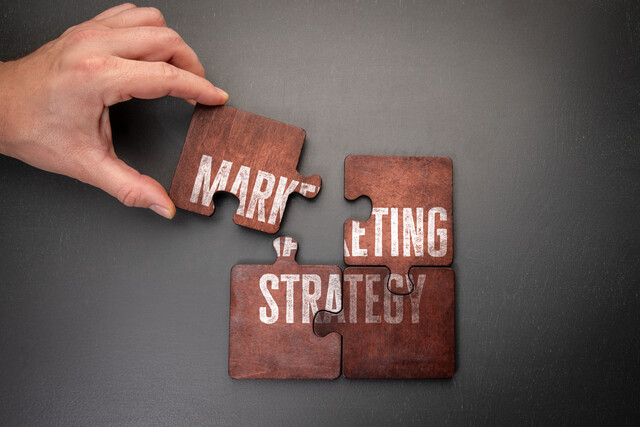In this article, you will learn about Brand Equity, which is defined as the value of a brand, based on consumer loyalty and positive brand characteristics. The more brand equity a company has, the more sales it will make, and the more consumer loyalty it will gain. It is the job of the marketer to use strategies to increase brand equity.
Every company wants brand equity.
Think of luggage and handbag maker Louis Vuitton. It is one of the most valuable brands in the world, and is immediately recognizable by its "LV" logo. The company is over 150 years old, and its products are known for their impeccable craftsmanship. Their most popular handbag, the Speedy, can cost as much as $1,000 for the larger models. And these handbags aren't even leather -- they are made with a very strong type of canvas.
And you know what? The company never lowers its prices. It never has sales. And stores that carry Louis Vuitton products are not allowed to lower prices or give discounts.
Even though Louis Vuitton handbags are so expensive, people are willing to pay the price for the status symbol. This is the ultimate example of brand equity. A company who's name is so revered consumers are willing to pay higher prices just for the privilege of owning one of their products.
The word "equity" is defined as the value of an asset. Simply put, brand equity is the value of a brand.
There are five stages to acquiring brand equity.
1. Brand Awareness
2. Brand Recognition
3. Brand Experience
4. Brand Preference
5. Brand Loyalty
1. Brand Awareness
If a tree falls in the forest and no one is around to hear it, does it make a sound?
Or�
If a brand has no consumer awareness, is it really a brand?
The first step, and most obvious step for a brand, is to gain brand awareness. A consumer must be aware the brand exists before it can begin to gain equity.
Key Term!
Household Name
The ultimate goal in brand awareness is when a product becomes so well known that is becomes a household name.
The first step in creating brand awareness is usually accomplished with advertising. A brand needs a way to get in front of the consumer, so the consumer is aware the brand exists. It is the job of the marketer to find a way to get a product and its message in front of the consumer.
Marketers work with advertisers to communicate the product, its brand, and its message. This can be done with any assortment of advertising or public relations media -- television commercials, prints ads, or online advertising. As more people become aware of the brand, the more buzz the brand receives in the market.
Brand awareness is becoming even more necessary in the age of the Internet. Consumers can use their computers, tablets, and smart phones to learn more about your brand, and this process is a quick one. One negative mention of a brand on social media can negatively affect a brand, so it's important for brands to have a social media team available to handle all online awareness and mentions -- good or bad.
Keeping a strong reputation is key to long-term survival and success for a brand.
2. Brand Recognition
Are consumers able to recognize your brand? Do they know how your brand differs from other brands?
For a brand to be successful, and to gain brand equity, it must be recognizable to consumers. A consumer must be able to identify the brand by only seeing its logo, packaging, or slogan. For this to happen, marketers must find a way to get a brand in front of consumers as often as possible. Brand recognition is gained when a consumer sees a brand or product repeatedly.
For example:
You are an avid drinker of sports drinks, and you usually buy whatever is on sale at your local supermarket. But for the past few weeks you have been seeing a new sports drink brand being advertised.
You have seen a commercial for it on television. When surfing the Internet, you are seeing banner ads for the new drink. In the Sunday newspaper, you find coupons for the new drink. When reading an online gossip site, you see a well-known athlete drinking the sports drink. When you go to the supermarket, you see a large display at the end of an aisle featuring the new drink.
So, you decide to try the sports drink. You have seen the brand over and over, and the use of those consistent visuals makes the brand more recognizable.
Think!
All marketers want consumers to recognize their brand over other brands in the same category. Ideally, brands want their names to become actual words. Can you think of any brand name that has become a real word?
How about�
Kleenex?
Band-Aid?
Frisbee?
What other examples can you think of?
What are the most recognizable brands? Look at the following list, and see if you are able to immediately see the brand's logo in your head.
1. Coca-Cola
2. McDonald's
3. Google
4. Apple
5. Microsoft
6. Nike
7. eBay
8. Pepsi
9. Target
10. Walmart
The brands above are immediately familiar to almost everyone, including children. Most of them are also known worldwide. The ability for a consumer to recognize a brand upon quick sight is crucial for brand equity.
Once a consumer is aware of a brand, and is able to easily recognize it, the next step is the brand experience.
3. Brand Experience
Have consumers tried your brand? Did they have a good experience? What is the brand experience?
The brand experience involves all the stimuli a consumer experiences when using a brand. This could be a visual stimulus, such as a good response to a brand's logo or packaging. Or the way a product smells could allow consumers to feel an attachment to the brand. How the brand is obtained is also important.
For an example, let's use Starbucks.
It's logo, a green and white round image of a siren, is immediately recognizable.
Starbucks coffee cups are white with the green and white logo. They are immediately recognizable.
When you buy a coffee at Starbucks, you don't order a small, medium or large. You order a Tall, Grande or a Venti. Starbucks could've used the normal small, medium and large sizes, but by using the other terms, they enhance the customer experience. Ordering a "Venti" coffee sounds much more exciting that ordering a "Large." After all, you get a large coffee at McDonald's; at Starbucks, they want you to have a different type of experience.
The term "Tall" refers to a small coffee. But by ordering a "Tall," the consumer feels they are getting more -- even when they know they aren't.
The term "Grande" means "Large" in Italian, because ordering in Italian is always better, right?
The term "Venti" means "20" in Italian. Again, the name doesn't have much to do with the size, but ordering a "Venti" over a "Large" enhances the consumer experience.
When you visit a Starbucks, whether in New York City, Tokyo, London, or any other worldwide location, the interior of the coffee shop is almost always the same. The counter has a baked good section, the product and price list is on the wall behind the cashier, and there is a separate counter to pick up your drink when it is ready.
And remember, the person who makes your coffee is not just an employee, but a "barista." Barista is Italian for bartender, and while the term is used frequently in Europe, Starbucks was the first coffee chain in the U.S. to use the Italian term.
Whether you like Starbucks or not, you must admit the brand has a specific experience tied to it. These experiences are often comforting to consumers, who like to know what to expect, and are hesitant to experience change.
Think!
What other brands have a specific experience tied to its name?
How about�
Victoria's Secret?
McDonald's?
The Apple Store?
7-11 Convenience Store?
What other brands can you think of that have a defined experience tied to it?
4. Brand Preference
Do consumers prefer your brand to other brands? Do they become repeat purchasers of your brand? Do they form an emotional attachment to your brand?
Brand preference occurs when a consumer desires one brand over other, comparable products and brands. A consumer with a preference for one brand is often willing to spend more for the brand, which results in increased sales and profits for the brand. This preference is the first step in attaining consumer loyalty, which is the Holy Grail for brands and marketers.
Marketers develop brand preference by convincing consumers that their product is of higher quality than comparable products. This is accomplished by providing a high quality product that is consistent. A good brand reputation can lead to a brand being considered the standard by which comparable products are measured. This is the ultimate goal.
For example, you are in the supermarket purchasing items for a BBQ. You get to the condiments aisle, and you immediately reach for the bottle of Heinz ketchup. Why?
Generally speaking, ketchups all taste very similar. They have the same color and consistency. So why do we reach for the Heinz when there are similar and less expensive products available?
It is because we trust the Heinz brand. It is a brand that is 150 years old, and we are used to seeing its familiar packaging and logo. We remember the brand from our childhood. We have memories of eating out at restaurants, and tapping the bottom of a glass Heinz ketchup bottle while we wait for the ketchup to slowly exit the bottle.
Think!
What brands do you prefer, and why?
If one store didn't have your preferred brand, would you buy a similar product, or would you go to a different store to find your preferred product?
5. Brand Loyalty
This is the ultimate coup for any brand. Loyalty means the consumer will only purchase your brand, and will travel whatever distance necessary to purchase the brand. An emotional bond is established, whereas the consumer is totally loyal to the brand, and is unwilling to accept any substitutes.
Brand loyalty differs from brand preference, in that brand loyalty means a consumer is emotionally attached and loyal to a brand. They will not buy a comparable brand or substitute. A loyal customer is the most valuable aspect of brand equity.
Do you know what brand has the highest amount of brand loyalty? Amazon!
Amazon consistently has the largest variety of products, cheap and fast shipping, an easy-to-navigate website, and an extremely successful customer loyalty program called "Amazon Prime." Prime costs $99 a year, and still, consumers are buying more and more memberships each year.
People are so loyal to Amazon, that it doesn't really have any competition. Yes, there are sites that sell the same merchandise, but none that have the extensive selection, the low prices, and fast shipping as Amazon does.
Think!
What other brands have exceptional brand loyalty?
How about�
Apple?
Facebook?
Walmart?
Google?
What brands can you think of that have such good brand loyalty, that there are few, if any, real competitors?
Once consumers reach the brand loyalty stage, the work isn't done. The challenge is to preserve the current consumer loyalty, while actively building new loyalty, to keep the brand's equity positive for years to come.
So, what did you learn in this article?
1. You learned the definition of brand loyalty, and why it is important to a brand.
2. You learned about brand awareness and brand recognition, and the difference between the two.
3. You learned about brand experience, and how a consumer's experience with a brand affects the brand's equity.
4. You learned about brand preference, as well as brand loyalty, which is the ultimate goal for any brand.































